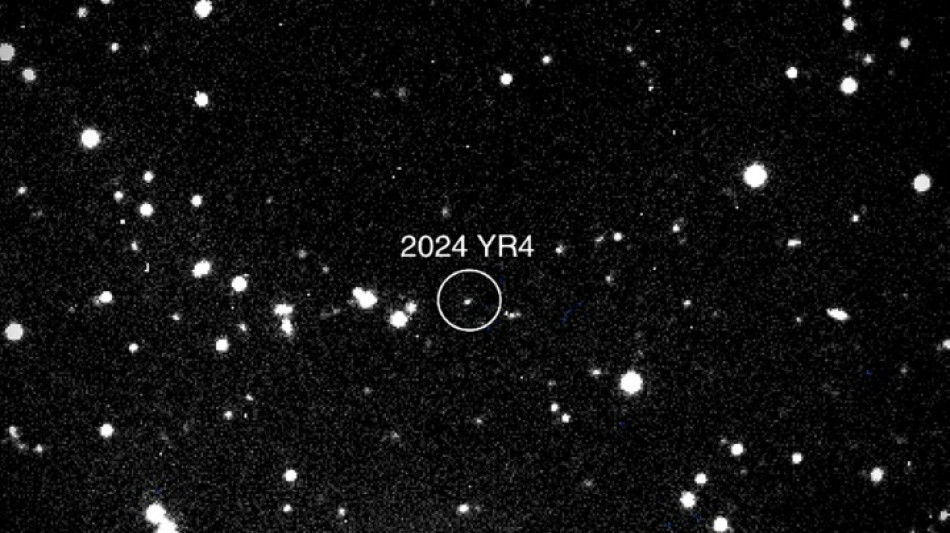
-
 France unveils new government amid political deadlock
France unveils new government amid political deadlock
-
Child's play for Haaland as Man City star strikes again

-
 India crush Pakistan by 88 runs amid handshake snub, umpiring drama
India crush Pakistan by 88 runs amid handshake snub, umpiring drama
-
Hojlund fires Napoli past Genoa and into Serie A lead

-
 Sevilla rout 'horrendous' Barca in Liga thrashing
Sevilla rout 'horrendous' Barca in Liga thrashing
-
Haaland fires Man City to win at Brentford, Everton end Palace's unbeaten run

-
 Haaland extends hot streak as Man City sink Brentford
Haaland extends hot streak as Man City sink Brentford
-
Italy working hard to prevent extra US tariffs on pasta

-
 Sinner out of Shanghai Masters as Djokovic battles into last 16
Sinner out of Shanghai Masters as Djokovic battles into last 16
-
Swift rules N. America box office with 'Showgirl' event

-
 Ryder Cup hero MacIntyre wins Alfred Dunhill Links on home soil
Ryder Cup hero MacIntyre wins Alfred Dunhill Links on home soil
-
Republicans warn of pain ahead as US shutdown faces second week

-
 Sevilla rout champions Barca in shock Liga thrashing
Sevilla rout champions Barca in shock Liga thrashing
-
Norris-Piastri clash overshadows McLaren constructors' title win

-
 Trump administration declares US cities war zones
Trump administration declares US cities war zones
-
Bad Bunny takes aim at Super Bowl backlash in 'SNL' host gig

-
 El Khannouss fires Stuttgart into Bundesliga top four
El Khannouss fires Stuttgart into Bundesliga top four
-
Insatiable Pogacar romps to European title

-
 Newcastle inflict more pain on Postecoglou, Everton end Palace's unbeaten run
Newcastle inflict more pain on Postecoglou, Everton end Palace's unbeaten run
-
Daryz wins Prix de l'Arc de Triomphe thriller

-
 Russell wins Singapore GP as McLaren seal constructors' title
Russell wins Singapore GP as McLaren seal constructors' title
-
Landslides and floods kill 64 in Nepal, India

-
 Russell wins Singapore GP, McLaren seal constructors' title
Russell wins Singapore GP, McLaren seal constructors' title
-
Djokovic 'hangs by rope' before battling into Shanghai last 16

-
 Erasmus proud of Boks' title triumph as Rugby Championship faces uncertain future
Erasmus proud of Boks' title triumph as Rugby Championship faces uncertain future
-
French PM under pressure to put together cabinet

-
 US Open finalist Anisimova beats Noskova to win Beijing title
US Open finalist Anisimova beats Noskova to win Beijing title
-
Hamas calls for swift hostage-prisoner swap as talks set to begin

-
 Opec+ plus to raise oil production by 137,000 barrels a day in November
Opec+ plus to raise oil production by 137,000 barrels a day in November
-
Death toll from Indonesia school collapse rises to 45

-
 Brisbane Broncos edge Storm in thrilling NRL grand final
Brisbane Broncos edge Storm in thrilling NRL grand final
-
Refreshed Sabalenka 'ready to go' after post-US Open break

-
 Georgia PM vows sweeping crackdown after 'foiled coup'
Georgia PM vows sweeping crackdown after 'foiled coup'
-
Landslides and floods kill 63 in Nepal, India

-
 No handshakes again as India, Pakistan meet at Women's World Cup
No handshakes again as India, Pakistan meet at Women's World Cup
-
Georgia PM announces sweeping crackdown on opposition after 'foiled coup'

-
 Syria selects members of first post-Assad parliament
Syria selects members of first post-Assad parliament
-
Russian strikes kill five in Ukraine, cause power outages

-
 World champion Marquez crashes out of Indonesia MotoGP
World champion Marquez crashes out of Indonesia MotoGP
-
Babis to meet Czech president after party tops parliamentary vote

-
 Death toll from Indonesia school collapse rises to 37
Death toll from Indonesia school collapse rises to 37
-
OPEC+ meets with future oil production hanging in the balance

-
 Dodgers down Phillies on Hernandez homer in MLB playoff series opener
Dodgers down Phillies on Hernandez homer in MLB playoff series opener
-
Philadelphia down NYCFC to clinch MLS Supporters Shield

-
 Syria selects members of first post-Assad parliament in contested process
Syria selects members of first post-Assad parliament in contested process
-
Americans, Canadians unite in battling 'eating machine' carp

-
 Negotiators due in Cairo for Gaza ceasefire, hostage release talks
Negotiators due in Cairo for Gaza ceasefire, hostage release talks
-
Trump authorizes troops to Chicago as judge blocks Portland deployment

-
 Wallabies left ruing missed chances ahead of European tour
Wallabies left ruing missed chances ahead of European tour
-
Higgo stretches PGA Tour lead in Mississippi


A 'city-killer' asteroid might hit Earth -- how worried should we be?
A colossal explosion in the sky, unleashing energy hundreds of times greater than the Hiroshima bomb. A blinding flash nearly as bright as the Sun. Shockwaves powerful enough to flatten everything for miles.
It may sound apocalyptic, but a newly detected asteroid nearly the size of a football field now has a greater than one percent chance of colliding with Earth in about eight years.
Such an impact has the potential for city-level devastation, depending on where it strikes.
Scientists aren't panicking yet, but they are watching closely.
"At this point, it's 'Let's pay a lot of attention, let's get as many assets as we can observing it,'" Bruce Betts, chief scientist of The Planetary Society, told AFP.
- Rare finding -
Dubbed 2024 YR4, the asteroid was first spotted on December 27, 2024, by the El Sauce Observatory in Chile. Based on its brightness, astronomers estimate it is between 130 and 300 feet (40–90 meters) wide.
By New Year's Eve, it had landed on the desk of Kelly Fast, acting planetary defense officer at US space agency NASA, as an object of concern.
"You get observations, they drop off again. This one looked like it had the potential to stick around," she told AFP.
The risk assessment kept climbing, and on January 29, the International Asteroid Warning Network (IAWN), a global planetary defense collaboration,issued a memo.
According to the latest calculations from NASA's Jet Propulsion Laboratory, there is a 1.6 percent chance the asteroid will strike Earth on December 22, 2032.
If it does hit, possible impact sites include over the eastern Pacific Ocean, northern South America, the Atlantic Ocean, Africa, the Arabian Sea, and South Asia, the IAWN memo states.
2024 YR4 follows a highly elliptical, four-year orbit, swinging through the inner planets before shooting past Mars and out toward Jupiter.
For now, it's zooming away from Earth -- its next close pass won't come until 2028.
"The odds are very good that not only will this not hit Earth, but at some point in the next months to few years, that probability will go to zero," said Betts.
A similar scenario unfolded in 2004 with Apophis, an asteroid initially projected to have a 2.7 percent chance of striking Earth in 2029. Further observations ruled out an impact.
- Destructive potential -
The most infamous asteroid impact occurred 66 million years ago, when a six-mile-wide space rock triggered a global winter, wiping out the dinosaurs and 75 percent of all species.
By contrast, 2024 YR4 falls into the "city killer" category.
"If you put it over Paris or London or New York, you basically wipe out the whole city and some of the environs," said Betts.
The best modern comparison is the 1908 Tunguska Event, when an asteroid or comet fragment measuring 30-50 meters exploded over Siberia, flattening 80 million trees across 770 square miles (2,000 square kilometers).
Like that impactor, 2024 YR4 would be expected to blow up in the sky, rather than leaving a crater on the ground.
"We can calculate the energy... using the mass and the speed," said Andrew Rivkin, a planetary astronomer at Johns Hopkins Applied Physics Laboratory.
For 2024 YR4, the explosion from an airburst would equal around eight megatons of TNT -- more than 500 times the power of the Hiroshima bomb.
If it explodes over the ocean, the impact would be less concerning, unless it happens near a coastline triggering a tsunami.
- We can stop it -
The good news, experts stress, is that we have plenty of time to prepare.
Rivkin led the investigation for NASA's 2022 DART mission, which successfully nudged an asteroid off its course using a spacecraft -- a strategy known as a "kinetic impactor."
The target asteroid posed no threat to Earth, making it an ideal test subject.
"I don't see why it wouldn't work" again, he said. The bigger question is whether major nations would fund such a mission if their own territory wasn't under threat.
Other, more experimental ideas exist.
Lasers could vaporize part of the asteroid to create a thrust effect, pushing it off course. A "gravity tractor," a large spacecraft that slowly tugs the asteroid away using its own gravitational pull, has also been theorized.
If all else fails, the long warning time means authorities could evacuate the impact zone.
"Nobody should be scared about this," said Fast. "We can find these things, make these predictions and have the ability to plan."
M.Betschart--VB




